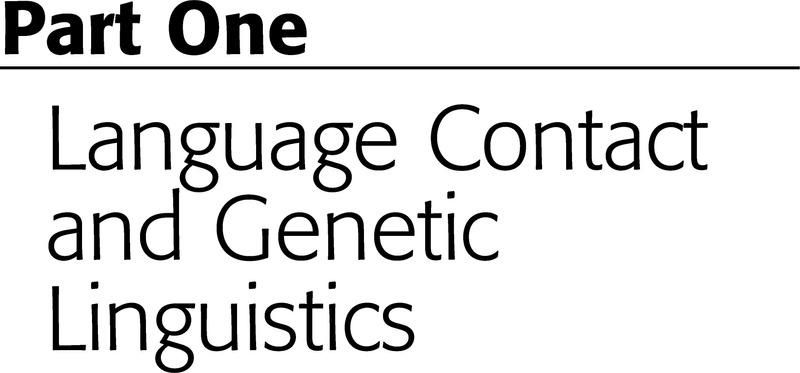Book contents
- The Cambridge Handbook of Language Contact
- Cambridge Handbooks in Language and Linguistics
- The Cambridge Handbook of Language Contact
- Copyright page
- Contents
- Maps Volume I
- Figures Volume I
- Tables Volume I
- Contributors
- Preface
- Introduction
- Part One Language Contact and Genetic Linguistics
- Part Two Linguistic Areas
- Part Three Language Spread
- Part Four Emergence and Spread of Some European Languages
- Part Five Language Diasporas
- Author Index
- Language Index
- Subject Index
- References
Part One - Language Contact and Genetic Linguistics
Published online by Cambridge University Press: 02 June 2022
- The Cambridge Handbook of Language Contact
- Cambridge Handbooks in Language and Linguistics
- The Cambridge Handbook of Language Contact
- Copyright page
- Contents
- Maps Volume I
- Figures Volume I
- Tables Volume I
- Contributors
- Preface
- Introduction
- Part One Language Contact and Genetic Linguistics
- Part Two Linguistic Areas
- Part Three Language Spread
- Part Four Emergence and Spread of Some European Languages
- Part Five Language Diasporas
- Author Index
- Language Index
- Subject Index
- References
Summary

- Type
- Chapter
- Information
- The Cambridge Handbook of Language ContactVolume 1: Population Movement and Language Change, pp. 41 - 186Publisher: Cambridge University PressPrint publication year: 2022

